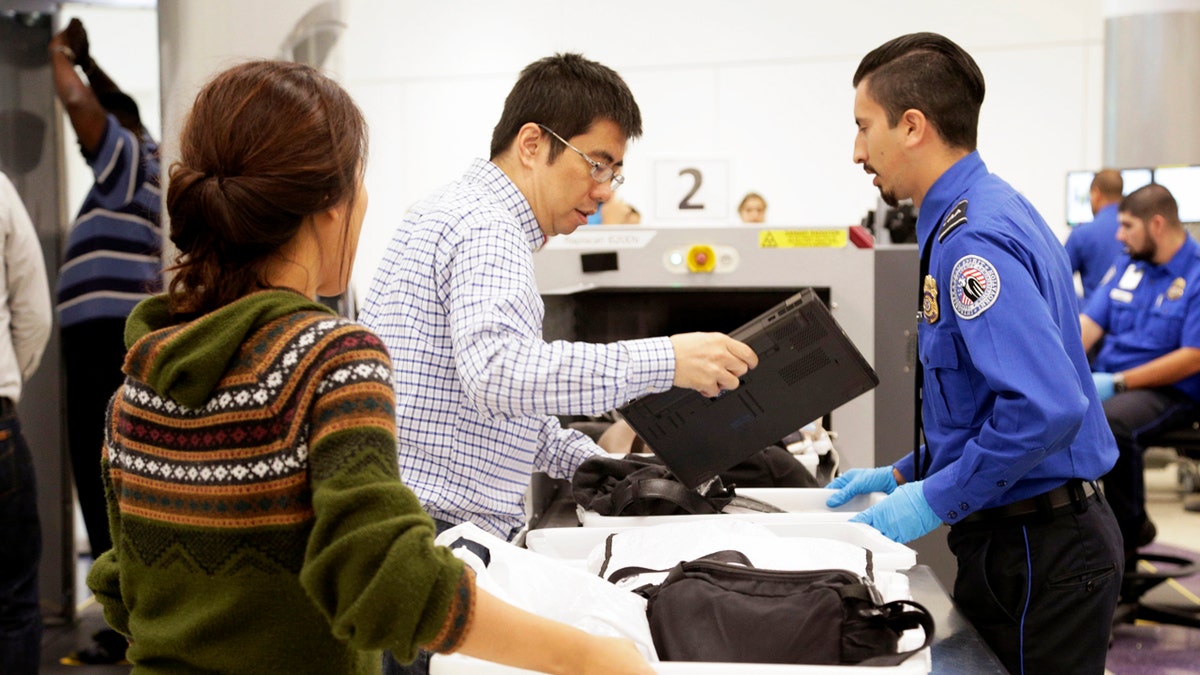
Passengers arriving from international flights move through an expedited Transportation Security Administration checkpoint at a new direct passageway to domestic flights at Los Angeles International Airport. (AP File Photo)
Taking a bus, a train, or a ferry has long offered a level of convenience that air travel can’t. Arrive two hours before a domestic flight, and it can still be a stretch making it before the gate closes; show up at New York's Penn Station 15 minutes before your departure time (to minimize how long you have to stay in that dystopian nightmare of a building), and you’ll have enough time left over to grab a slice.
That ease of travel that we gain from not having the intense—and, at times, bafflingly inefficient—TSA oversight found in airports may soon be a thing of the past, though, as a new bill making its way through Congress seeks to expand TSA’s reach onto buses, trains, and ferries, known collectively as surface transportation.
The bipartisan bill introduced last week by Senator John Thune (R-SD) and Bill Nelson (D-FL) would require that the TSA assess terrorism risk at all surface transportation facilities—bus depots, train stations, ports—and implement new security models based on those risks.
More from Conde Nast Traveler
The Friendliest and Unfriendliest Cities Around the World
The Best Small Towns in America
The Most Beautiful Travel Destinations of All Time
The 30 Most Terrifying Places on Earth
According to website The Hill, the lawmakers cited concerns about whether the TSA is adequately identifying security risks in non-airport transport hubs. According to a report from the Office of Inspector General, the agency is not. Last year, 80 percent of the TSA's $7.4 billion budget was spent at airports, while only two percent went to surface-level transportation.
“TSA lacks an intelligence-driven, risk-based security strategy that informs security and resource decisions across all transportation modes,” reads the report, observing a security approach “designed for the aviation mode and chiefly for air passenger screening.” Thune, Nelson, and co. want to change this with legislation that would see train operators gaining access to TSA’s terrorist watch list, more rigorous screening of passengers and employees, and an uptick in TSA canine units at stations and ports.
It is important to note a few caveats.
First of all, it is far from a certainty that the bill will pass at all: TSA’s operating budget was already reluctantly given an emergency boost earlier this year after there were widespread complaints about understaffed, molasses-slow airport security lines. Secondly, the strengthening of surface transportation does not necessarily mean you’ll be taking your shoes off and lining up for a body scan before you board a Megabus or Amtrak.
“This is very much not creating for bus or rail transportation the [security] model that exists for aviation,” Frederick Hill, a spokesperson for the Senate Committee on Commerce, Science, and Transportation, told Bloomberg. Instead, any new security would be based on risk-assessment research, so it could take any number of forms—from higher police presence to (possibly, but not necessarily) bag scanners.
While introducing the legislation, Thune and Nelson made reference to surface transportation hubs as "soft targets" for terrorists, citing the incident, just days earlier, when homemade pipe bombs were discovered near a train station in Elizabeth, New Jersey, and devices exploded in Seaside Heights, New Jersey and in Manhattan.
Back in April, in the wake of terrorist attacks in Brussels and Paris, we came across some curious data: Turns out, that due to the increase in security at airports, more people were taking trains because they got them from one city to another in less time.
RELATED: When Travel Protection May Not Protect You
In the United States, savvy travelers know this has always been the case for popular short-haul routes. The Acela gets you from New York to Boston in three-and-a-half hours, while a flight involves just an hour in the sky, but adding in the extra hours to get to the airport, check in, go through a TSA line and it turns out to be a longer overall trip. It all comes down to a trade-off between convenience and security, efficiency and peace of mind.
Time will tell which one Congress prioritizes—and if they’re willing to pay for it.
